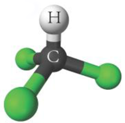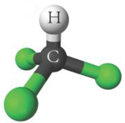Simulating a molecule
In the early 1980s, Richard Feynman proposed using a computer that followed the rules of quantum mechanics to mimic a physical system—not in the way digital computers perform numerical simulations, but something closer in spirit to an analog computer where expectation values of some quantum subunit were the “readout.”
Today, we know these devices as quantum computers and intense efforts are focused on scaling them up to make useful computational devices. But investigations into Feynman’s original notion of quantum computers as “quantum simulators” still exist. Several groups have reported results with quantum computers based on nuclear magnetic resonance (NMR) and ion-trap methods, including molecular simulators that calculate molecular energy levels.
Writing in Physical Review Letters, Jiangfeng Du and colleagues at the Hefei National Lab for Physical Sciences at the Microscale in China report their work on using a quantum computer to simulate a hydrogen molecule. The simulation is performed with NMR-based quantum information processing: isotopically labeled chloroform molecules act as the processing medium, with serving as the system qubit. By applying a sequence of NMR pulses to the chloroform, Du et al. can prepare an initial state of the carbon, manipulate the qubits in a controlled way, and read out the qubit phase shifts to generate a value for the ground-state energy of a hydrogen molecule. Although only a proof-of-principle on a test case, Du et al. are able to carry out the computation with 45-bit precision and show the potential for quantum information processing in quantum chemistry calculations. – David Voss





